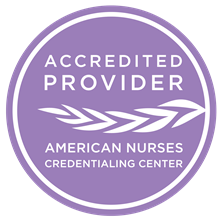If your first response is a state of overwhelm when an attorney hires you for a case that involves thousands of pages of medical records, don’t despair. In this blog, 5 CLNC® Pros discuss:
- Useful software and tips for organizing and Bates numbering medical records.
- Tips for when to print and when not to print medical records.
- How to quickly get to the essence of a case amidst thousands of pages of medical records (including whether you should read every page).
- Unique tips for medical malpractice, personal injury, products liability and toxic tort cases.
How Do Attorneys Deliver Large Volumes of Medical Records to Certified Legal Nurse Consultants?
Attorneys usually deliver medical records to CLNC consultants via a cloud-based HIPAA compliant link. Platforms attorneys commonly use include ShareFile and Dropbox.
What’s the Best Way to Organize the Medical Records?
There’s a high probability the medical records won’t be organized when you receive them. You can use Adobe Acrobat DC Pro or Kofax® Power PDF to organize, highlight, annotate and Bates number the medical records. They also offer Optical Character Recognition (OCR).
Follow the organizational format of the hospital or relevant facility records. For example, Emergency, Doctor’s Orders, MD Progress Reports/Notes, Consult Notes, Procedures, Nursing Records, Operative Report, Anesthesiology Reports, Pathology Reports, Radiology Reports, Lab Reports, PT, Discharge Summary, etc.
Establish with the attorney if they would like you or their copy service vendor to organize and Bates number the records.
What Is Bates Numbering?
A method used to assign unique consecutive page numbering to a collection of documents. This numbering system ensures that each page within a set of medical records is identifiable and retrievable to the attorney, legal staff, consultants and experts.
A Bates numbered record consists of a series of numbers and sometimes includes a letter or prefix that refers to a specific set of medical records (e.g., Hospital, MD office records, etc.). You can use Adobe Acrobat DC Pro to Bates number the records. Format the Bates label in accordance with your attorney-client’s preference. You can include the plaintiff’s last name, an acronym for the healthcare provider, followed by a number. For example, to reference Mickey Mouse (plaintiff) Disney Productions (Provider) use: Mouse-DP-00001 to 01000.
What Is Optical Character Recognition (OCR)?
OCR is a technology that converts documents (e.g., medical records and reports) into editable and searchable data.
Michelle Neal, RN, BSN, CLNC states, “When I’m dealing with a more complex case, I convert the medical records to OCR to ensure I haven’t missed any keywords. Additionally, I OCR all my reports so the attorney can easily search and identify words and information within my work product.”
Should I Print the Medical Records for My Review and Analysis?
Ask the CLNC Pros and they will each give you a different answer to this question. Read what they have to say to decide what system works best for you.
Suzanne Arragg, BSN, RN, CDONA/LTC, CLNC expresses, “It’s rare that I print all pages. If I am retained as a testifying expert, I generally print key documents that are relevant to the case. This allows me to easily reference them during a conference call with an attorney and during deposition and trial.”
Dale Barnes, RN, MSN, PhN, CLNC shares, “I never print out the entire record. If there are key records I feel more comfortable having in hand, I print out those sections. Sometimes I just highlight the relevant entries in the medical record and note the page numbers.”
Dorene Goldstein, RNC, BSN, CLNC states, “I do not print the medical records. I review them electronically. Sometimes I will extract important pages and then print what I need to show key information to my attorney-client.”
In contrast, Shequita Moore, RN, MSN, LNFA, CLNC states, “If the medical records are not voluminous or tedious in nature, I don’t print them during the screening process. I do print the pages relevant to the primary issues in the case that require additional analysis. I print out documents such as ADL records, flowsheets and care plans, which sometimes require comparison to other documents and facts in the medical records. When I further develop the case and write a report, I print out all pages of the medical records for review and analysis. This helps to ensure that I pay attention to detail and make notes as necessary. I can also compare documents and be more efficient when the records are printed out.”
Michelle Neal shares, “I never print out medical records. My attorneys prefer to do everything electronically. If there are specific pages that are pertinent to the case issues, I extract pages by using Adobe Acrobat and save them as a PDF. Then I include them within my email to the attorney when I submit my work product.”
Thousands of Pages of Medical Records Can Be Overwhelming to Review. How Do I Quickly Get to the Essence of the Case?
The first step to efficiency is to organize the medical records. It’s difficult to get to the essence of the case if the records are not organized. Suzanne Arragg cautions, “Sure, you can read an H&P, operative report or a change of condition report to understand the day/time and general circumstances of the injuries and issues. But you cannot see the story leading up to that date, the sequela of the event and the circumstances following it if the records are not organized.”
Once you organize the records start with the date of incident if you know it. Dale Barnes discusses, “Once I’ve identified the date of incident, I then go immediately prior to the date of that incident to determine the patient’s status at that time. Then I jump ahead to just after the incident to see the immediate condition of the patient following the incident. I keep going forward and back in that manner until I am satisfied I have enough information to form an opinion and proceed with whatever it is the attorney is requesting. I skip information that is not relevant to the case. For example, if a pre-op chest X-ray is irrelevant to the outcome of the case, I don’t concentrate on it. If it becomes important later (perhaps as a baseline) I will go back and review it thoroughly at that time. I only go back and read the skimmed pages in more detail if I determine later that the information is relevant. Using this back and forth method seems to be the most efficient for me. Of course, as I screen the case, I complete the screening form so I don’t forget any key issues later.”
If you don’t know the date of incident review key documents first, documents such as discharge summaries, history and physicals, progress notes, etc.
Michelle Neal shares, “I start by assessing the alleged injuries based on the estimated date of incident. I briefly skim through the medical records to identify when and where the injuries occurred. Once I have confirmed the injuries, then I start from the beginning. I create a template which I use to organize records from each facility. I note admission and discharge dates as well as page numbers for pertinent records which are relevant to the case issues. I typically begin by reviewing past medical records to identify any pre-existing injuries and the significant comorbidities that have potentially contributed to the injuries.”
Ultimately you should read or scan every page. The length of time spent with each page varies in accordance with its significance to the case. Take into consideration the number of years of medical records in relationship to the date of incident. Consider the severity of the injury and outcome.
If writing a comprehensive report, limit details to the relevant time frame surrounding the date of incident or deviations from the standards of care. Summarize historical information that the attorney should be aware of.
Any Recommendations for Specific Types of Cases?
Suzanne Arragg shares, “When I review an elder abuse case, I focus not only on the custodial care and treatment, but also on the change of condition, pressure injury, fall, nutrition and nursing assessments conducted in response to these issues. The more complex the case, the more time and detail I give to the key issues, while also considering the 1,000-foot view of the case.”
Dale Barnes describes, “For medical malpractice cases, my first point of interest is analyzing the required four legal elements. From there I analyze the injuries and outcome in more detail. For personal injury cases, I focus on pre-existing conditions and the severity of the injury and how it was managed. For toxic tort cases, I conduct a more extensive search of the authoritative research of the issues causing the toxicity. For products liability cases, I assess whether the plaintiff improperly used the device.”
Dorene Goldstein states, “For personal injury cases, I review the date of incident in detail and then look at the causation and damage issues. I also analyze pre-existing conditions that could mitigate the damages.”
Michelle Neal adds, “If it’s a pressure injury case, I know I need to review and analyze a variety of records thoroughly, including all skin records, wound care consults, MAR/TAR, care plans, skin risk assessments, nutrition records, labs, etc. In a fall case, I may not need to go that in-depth into the records; I may only need to look at nursing notes surrounding the fall, care plans, fall risks and radiology reports. In these types of cases, I almost always write a detailed summary report.
I take a very different approach when I work on personal injury cases such as motor vehicle accidents. In this type of case, I always review records for the date of accident to determine causation and damages, but then I go to prior medical records to assess pre-existing conditions as they relate to the alleged injuries. On these cases, my reports are always in a chronological timeline format.
Not every case requires looking at every single page of medical records, however, some cases do require a more thorough review of records to ensure you get every detail accurate for your attorney-client. For example, if I’m reviewing a fall case, I don’t necessarily need to review all of the physicians’ orders if I have already determined a fall risk was appropriately completed. If I am working on a sepsis case, I don’t need to look at all fall interventions if a fall didn’t occur. If I’m working on an MVC case, I don’t need to review all hospitalizations prior to the MVC unless they are consistent with treatment for the same alleged injuries. It’s important to use your clinical judgment with every case to determine which factors may or may not contribute to or affect the outcome of the case.
Once I locate the pertinent information, I start taking notes in my word document by breaking up the pertinent records into different categories. For example, if I am looking at a pressure injury case, I need to review all the Braden Assessments to confirm accuracy and consistency and then summarize what I find. If I’m working on a sepsis case, I need to confirm antibiotics administered were susceptible to the organism. Once I have completed this process for every category, which is specific to each type of case, I begin drafting my summary or timeline.”
Thanks to Suzanne Arragg, Dale Barnes, Dorene Goldstein, Shequita Moore and Michelle Neal for sharing their advice on how to avoid a state of overwhelm when analyzing large volumes of medical records.
Success Is Yours,
P.S. Comment and share your strategies for organizing large volumes of medical records.








